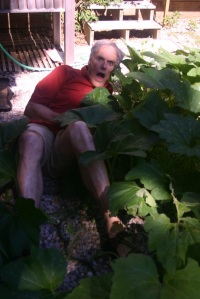At the risk of sinking the world in more words about Trump, I have to share a perspective I couldn’t have imagined a few months ago.
Back then, I was convinced that Trump couldn’t win and I didn’t know that I’d be in Kathmandu. But life is full of surprises, some bad and some good.
I’ve been here in the several weeks running up to the election, and seen it through the eyes of Nepali friends.
Around town
The campaign was of course the best show going, here as in the US and elsewhere. Everyone knew about it and had an opinion. I talked with some grade 3 children who were fascinated by the contest between Donald Trump and “that girl.” One said “I don’t like Donald Trump. Nobody does.” They said that Clinton was the President’s wife. I tried to point out that she’d actually had a distinguished career as Senator and Secretary of State, but that seemed to be of little interest.
Most Nepalis I’ve talked to were distressed to hear about the election. They worry both about the future of the US and about its impact on Nepal, particularly around trade. Some also display amusement. They would never say it outright, but it’s something along the lines of Americans being incompetent and clueless.
A few are Trump supporters, usually following the theory of creative disruption: The system is corrupt, leading to US arrogance, endless war, manipulation by banks, and so on. Something needs to be done to shake it up.
At a conference
As the election results were coming in, I was attending a conference here in Kathmandu. There were attendees from Nepal, India, Malaysia, the US, and some other places. Every speaker made some reference to the election. Late in the morning, which was the wee hours in the Eastern US, it started to become clear that Trump was winning.
One speaker said, “I know you’re not listening to me. Instead, you’re following the election on your phones. See, that proves my point about new technologies changing everything.”
That afternoon, everyone asked how I felt. It was hard to answer because I felt so many things: surprise, shock, depression, fear, anger, shame, and more. They wanted me to say what would happen next, which is ironic, since I was so wrong before.
So, what happens in the US has an impact everywhere. Yet many in the US may not appreciate how important global perception of our leadership can be.
In the media
Despite this, the US is not the center of attention all the time. I looked today at the online The Himalayan Times. There are nearly 100 articles. Several at the top of the page address the Indian government’s decision to ban 500 and 1,000 INR banknotes ($7.50 and $15). This is supposed to combat counterfeiting, but has dire consequences for many in Nepal, especially those in border areas.
There are articles about roads, traffic, health, sports, and many other areas, but nothing about Trump until you get to the special World section. There, you can read about Trump meeting with President Obama, and about reactions to the election from Russia, Germany, and UK.
Essentially, the US election is rapidly fading into “other news” or none at all here. With chronic infrastructure problems and a GDP per capita of less than $2 a day, most Nepalis have many other things to worry about. Of course, if Trump follows through on some of his outrageous statements, that will change. If international aid programs are cut, the effect here can be substantial and immediate.
I just keep going by reminding myself that I’m fortunate to be visiting an amazing and wonderful country. I experience surprising things every day, knowing that they’ll be only memories in a few weeks. They’re real of course, but not part of the real life I know back in the US. So, maybe when I return there I’ll discover that all this election stuff was just a strange experience that didn’t actually happen.





























